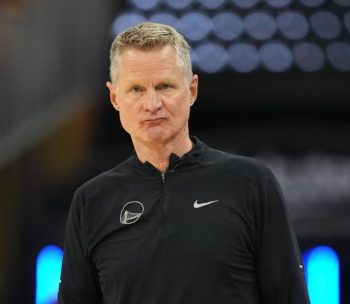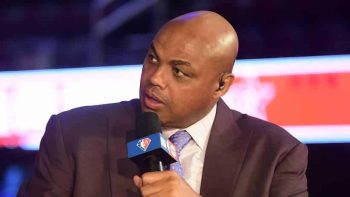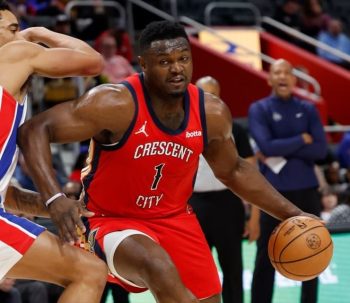NBA
NBA PM: Finding a Draft Steal

Every year, immediately following the draft, there are about a million articles on the internet discussing who the “steals” of that draft were. But that of course is ridiculous because until we see these kids play for a year or three, there’s very little way of knowing which of those bargain-buy draft picks will ultimately pan out. Plenty of them drop in the ranks for good reasons.
The following examines the players in the last three drafts who did ultimately prove to be steals in an attempt to discover if there are any overlying themes as to why they dropped on draft night or why they ultimately ended up outperforming their draft position.
It’s not easy to find a diamond in the rough, but executives try every year. Here’s a look at a few who proved plenty valuable, and why they weren’t picked as high on draft night as they apparently should have been:
2014 NBA Draft
Elfrid Payton, Philadelphia 76ers, traded to Orlando Magic (1st Round, 10th overall selection) – Coming out of Louisiana-Lafayette, Payton was the kind of small school kid that represented too much of a gamble to be selected much higher than he was. Also, his shooting woes in college aren’t typically the kind of thing that translates all that well to the NBA, so there weren’t a lot of teams interested in spending a high pick on a point guard who can’t knock down three-pointers. Despite that, Payton looked great as a rookie, leading all first-year kids in assists with 6.5 per game (8.5 per game after the All-Star break) and he’s a good rebounder for his position, as well.
Jusuf Nurkic, Chicago Bulls, traded to Denver Nuggets (1st Round, 16th overall selection) – It was a weird season for the Nuggets all around. But from what we were able to see from Nurkic, especially after Timofey Mozgov and JaVale McGee were traded, he looks like he’ll be a solid pro. Nurkic finished with the second-highest PER among rookies this season (15.00) and averaged 6.8 PPG and 6.1 RPG in under 18 minutes per contest. Per-36 minutes, that puts him right about at 13 points and 12 boards a night, and considering he’s only 20 years old, those are intriguing numbers. How does so young and talented a seven-footer come off the board this late in the first round? Because international prospects are hard to peg, and the Nuggets were the first team willing to take the risk on the Bosnian big man.
Jordan Clarkson, Washington Wizards, traded to L.A. Lakers (2nd Round, 46th overall selection) – After a slow start in Los Angeles, in which Clarkson hardly played at all, he rounded out the year with some massive scoring games, averaging 16 PPG, 5.3 APG and 4.7 RPG after the break. He slipped in the draft a little because at 6’5” a lot of teams weren’t really sure if he was going to be a big point guard with sloppy handles or a slightly undersized shooting guard. Either way he must have felt like too much of a tweener to burn a first-round pick on. He also came into the league a little light at only 190 lbs, but apparently his aggressive style translated well enough to the NBA game for him to thrive with an excellent opportunity in L.A. We’ll see if he continues playing that well or if his success was more a result of his circumstances last season.
2013 NBA Draft
Nerlens Noel, New Orleans Pelicans, traded to Philadelphia 76ers (1st Round, 6th overall selection) – While it looks now like Noel was worth the one-year wait, it was his torn ACL that dropped what some thought would have been the #1 pick in a weak 2013 draft all the way to the 6th overall selection. That’s why Philadelphia snatched him where they did (they also got an extra first-round pick in the deal that shipped Jrue Holiday to New Orleans), and so far that’s looked like quite a bargain, as Noel averaged 9.9 PPG and 8.1 RPG his rookie season to go along with 1.8 steals and 1.9 blocks per game. The pick looks even better considering there were teams who felt like Anthony Bennett, Otto Porter and Cody Zeller were better selections ahead of Noel.
Giannis Antetokounmpo, Milwaukee Bucks (1st Round, 15th overall selection) – At the time it was something of a surprising pick for Milwaukee to make, but there wasn’t a lot left on the board by pick #15 so they went with the high-ceiling international kid with plenty of youth and freakish measureables. He came into the league about as raw as raw comes, but in just two years he has been given plenty of opportunity to blossom for a Bucks team that had no reason not to give him minutes early. His 12.7 PPG and 6.7 rebounds as a sophomore are clearly just the beginning of something special, though at the time no one had any idea if the gamble would work out.
Gorgui Dieng, Utah Jazz, traded to Minnesota Timberwolves (1st Round, 21st overall selection) – Coming off a championship season at Louisville, it was no mystery why Dieng was a first-round draft selection. But considering his success in the NBA (9.7 PPG, 8.3 RPG and 1.7 BPG as a sophomore) it’s kind of surprising he fell as late in the first round as he did. He wasn’t the shiniest name back in 2013 in large part because he was viewed as a one-dimensional player. Just two years later we now know how valuable rim protectors are in today’s NBA, and Dieng has proven to be more versatile than many scouts apparently thought possible.
Mason Plumlee, Brooklyn Nets (1st Round, 22nd overall selection) – There really is no good reason why Plumlee dropped as far as he did in the 2013 Draft, especially considering his athleticism paired with his 7’0” frame (Meyers Leonard was essentially a lottery pick the year before in a more stacked draft), but sometimes there are just players that end up being a consequence of the way the cookies crumble in a given year. Plumlee could have gone five-to-seven picks higher and no one would have batted an eyelash, but he fell to Brooklyn, where he’s had a productive couple of seasons. Originally thought of as a backup big, Plumlee has proved himself more than capable of starting for a number of NBA teams.
2012 NBA Draft
Andre Drummond, Detroit Pistons (1st Round, 9th overall selection) – The knock on Drummond back in 2012 was his lack of drive. The entire narrative on the kid leading into that draft was that he didn’t really care about basketball, that he was more concerned with the party lifestyle that the NBA would provide him, and since he went to UConn that made it really easy to compare him to massive bust Hasheem Thabeet. Drummond, however, has been nothing like Thabeet in his first three seasons, mostly because he’s been really, really good. He’s the worst free throw shooter of his generation, but he also averaged 13.8 PPG, 13.5 RPG and 1.9 BPG last season. He’s a big man on the rise, and in 2012 the top eight teams couldn’t wait to pass on him.
Jared Sullinger, Boston Celtics (1st Round, 21st overall selection) – For two straight seasons, Sullinger has averaged at least 13.3 PPG and 7.6 RPG, and while injuries have been an issue for him, there weren’t a whole lot of players Boston could have picked that late in the first round who would have proven to be better values. Sullinger’s knock in 2012 was a last-minute injury issue that got him red-flagged, and that caused him to absolutely tumble down the first round after originally being projected as a lottery pick. It turns out that the injury concerns were somewhat valid, but 50-60 games of Sullinger is certainly more valuable than what we’ve seen out of Royce White, Tyler Zeller and Andrew Nicholson, all picked in the five selections before Sullinger.
Draymond Green, Golden State Warriors (2nd Round, 35th overall selection) – There clearly is no way Green should have been a second-round pick, but despite his talent at Michigan State there were a lot of teams that weren’t sure where they’d play him in the NBA. They saw him as an undersized power forward without the requisite skills to play the three in the NBA. Positions, pro teams should have learned years ago, don’t matter when the talent is there, and Steve Kerr has figured out how to harness Green’s strengths to the point that he was both a Defensive Player of the Year and Most Improved Player candidate this past year. He’s also now a key cog to an NBA championship team.
So what consistencies or patterns are there among these draft selections? The first is that there are quite a few players who were involved in draft-day trades, which likely means they fell far enough down the board where some desirous team felt it was prudent to go after the player, making an offer strong enough to pluck them off the low branches when they dipped. Elfrid Payton and Nerlens Noel are the best recent examples of this, though Jusuf Nurkic and Gorgui Dieng were involved in such trades, too, though not as the centerpieces of their deals (Doug McDermott and Trey Burke, respectively).
Beyond that, the news isn’t great for front offices, because a lot of what makes these players such bargain bin buys is that they came into the draft with various red flags. Philly might have scored with Noel, letting him take a year off to nurse his torn ACL in exchange for him falling to them (okay, so New Orleans) at #6 in 2013, but then last year they tried the same formula with Joel Embiid and he already is starting to look like he’ll be injured his entire career. In 2012 Sullinger dropped because of knee issues, and while that’s worked out to a certain degree for Boston, Baylor’s Quincy Miller, once thought a top-five prospect, dropped for the same reason and hasn’t had the same NBA success.
Draymond Green slipped because he was too small to play his position, and the same was said about the tiny Isaiah Thomas a few years earlier, which is why he was lucky even to be the last player selected in 2011. Despite the successes of Green and Thomas, there have been a ton of 6’7” power forward and 5’11” point guards that have failed over the years. Sometimes, those undersized guys can work out. Often, they do not.
Nurkic and Antetokounmpo, though inexperienced and relatively unknown as ultra-young foreign prospects, look like they both will be awesome pros, but it might be a while before we know if Bruno Caboclo was as savvy a pick for Toronto general manager Masai Ujiri.
In other words, to find steals in the draft it looks like teams need to be willing to accept a certain measure of risk in making a value selection. A lot of times, these are the picks that fail. By that same measure, going “safe” can backfire, too, as low-ceiling/high-floor picks don’t always pan out, either.
The quick answer is that the draft isn’t easy, but the good news is that there are bargains to be had. It looks like the trick is knowing when to take the risk on one and trading up to assume that risk whenever possible. We’ll see who ends up taking those risks this year in just under a week.













